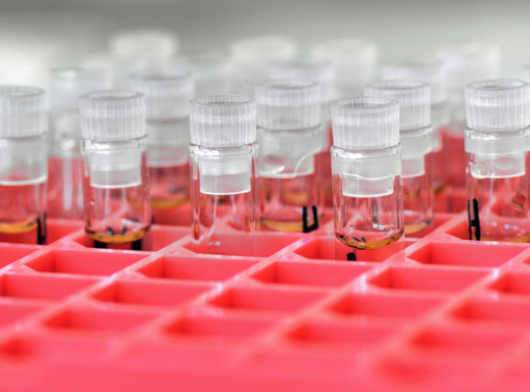ARVYS Proteins Inc. provides a full spectrum of protein biochemistry services – recombinant protein expression in bacterial, insect and mammalian cells, protein purification, refolding, assays and assay development, protein characterization, fermentation and endotoxin removal.
Outsource your protein biochemistry projects to ARVYS and enjoy superior results, team expertise and customer support after project completion.
Affiliation – Caroline Goussen, Laëtitia Goldstein, Corinne Brèque, Bruno You, Stéphane Boyer,Damien Bataille, Ludovic Burlot
LFB Biotechnologies, Direction Générale du Développement, 3 avenue des Tropiques, 91940 Les Ulis, France

Abstract
In response to the strong demand of biological protein therapeutics, such as monoclonal antibodies (MAbs), continuous downstream process was developed to deliver these molecules while maintaining desired product consistency and quality attributes, and providing manufacturing e ciency and exibility. Viral safety is a cri- tical quality attribute for biopharmaceuticals, such as MAbs. Evaluation of the viral clearance by the downstream process is a key component of risk mitigation. Protein A chromatography is typically used as an initial capture step for MAbs and e cient for the removal of process-related impurities like Host Cell Proteins (HCP). This step can also contribute to the clearance of potential viral contaminants.
Murine Minute Virus (MMV)-spiking experiments were performed at small scale to investigate the impact on the viral clearance e ciency of the way the Protein A chromatography step is carried out, whether in batch or multicolumn mode. Protein A chromatography step using Novasep Sequential MultiColumn Chromatography (SMCC) technology demonstrated no statistical di erence in the viral reduction with reduction factor (RF) of 3.7 log10 (vs. RF of 3.8 log10 for batch). The experiments showed also similar viral distribution over the puri cation cycles and columns.
Data con rmed that the viral clearance capacity by the continuous Protein A chromatography step using SMCC technology is maintained and e cient.
Results:
MAb yield and HCP reduction in Protein A eluate fraction from continuous bio-chromatography and batch studies design are presented in Table 3. For continuous bio-chromatography, a MAb yield of 99% was reached with an HCP reduction of 3.3 log10. Evolution of MAb yield and HCP reduction through the 7 puri cation cycles is presented for one column (column 3) in Table 4. A small and limited variability of MAb yield and HCP reduction was observed from cycle 1 to 7. Variation in yield after cycle 3 was due to the use of a second starting material from cycle 4 to cycle 7. The starting material (HCCF) was stored frozen. To limit aggregation of the thawed starting material during the ex- periment, two preparations were performed. The rst was used until cycle 3 and the second from cycle 4 to the end. The di erences between the two feed stocks are considered without impact on the study results. The starting material was ltrated. For continuous bio-chromatography experiment, the yield was improved compared to puri cation in batch but HCP reduction was 1 log10 lower.
To read the full journal, click here.
ARVYS Proteins Inc. provides a full spectrum of protein services to the life science, pharmaceutical and biotechnology communities. Our work experience encompasses almost every aspect of protein biochemistry allowing us to contribute to projects regardless of whether they are at early research or late development stages. We can be your partner in:
– generation and expression of recombinant proteins in bacterial, baculovirus and mammalian expression systems,
– large-scale fermentation,
– cell culture,
– purification of recombinant proteins, antibodies or naturally occurring proteins,
– refolding from inclusion bodies,
– improvement of protein stability,
– protein labeling with fluorescent, biotin and enzyme probes,
– endotoxin removal and testing for in vivo studies,
– protein characterization to monitor its integrity and functionality




